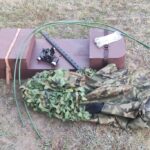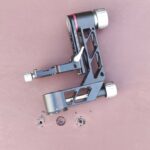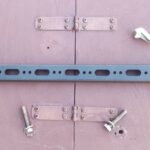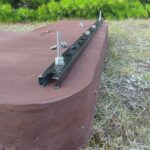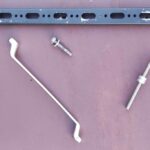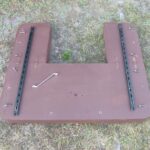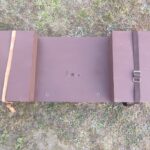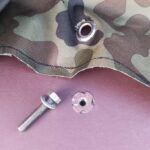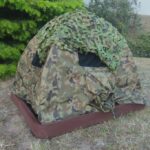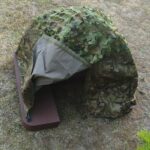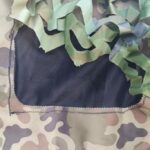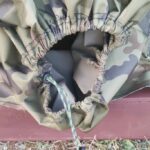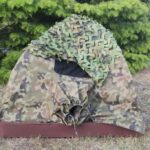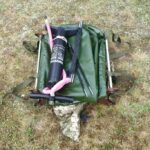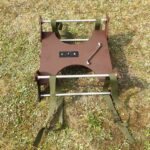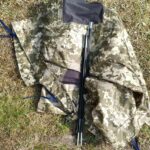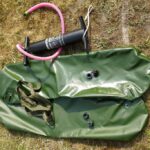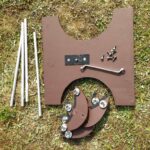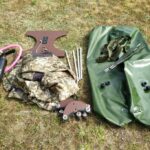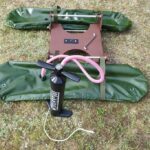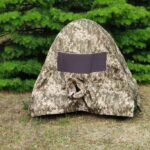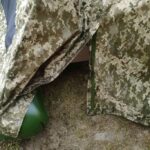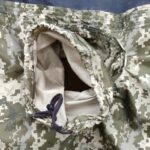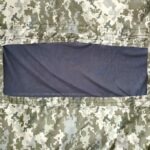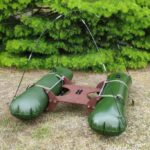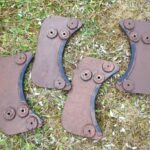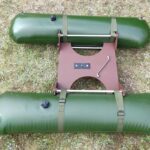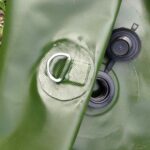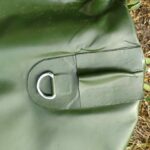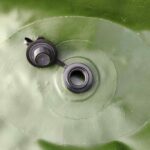A guide to making your very own floating hide
Do it yourself – a floating hide. A guide to making your very own floating hide… and how not to die while taking pictures.
This is a living article. I will update it from time to time. Be sure to check it more or less often if you are interested in news!
We all want to get to the wildlife as close as it’s possible. Hides are probably the best way to do it in the least invasive way. Of course, your blind is pretty much stationary and you have to lure animals to come to you. But what if you want to shoot waterfowl? Luring them to shore seems often impossible and yet it does not guarantee short distance shots. Shooting from kayak or a boat might easily scare animals away and getting those low perspective shots is almost impossible or too risky if you decide to hang down from the broadside. A floating hide comes to the rescue!
A floating hide makes for a perfect tool for shooting wildlife living around water. Not only waterfowl but also mammals such as deer, otters, beavers and many other. What makes it an extraordinary and versatile tool for creating exceptional images is its low perspective, mobility and small dimensions. First of all, a proper camouflage and its rather small size does not scare animals as much as a bigger kayak or boat. Not only you’re getting close, but more importantly intimate with your subjects. In my view this is magic. Secondly in 99% of cases you are forced to move around shallow waters, thus around the shore and the hide blends into environment pretty well. Shooting from a floating blind is limited to shallow waters and you have to stand on your feet. But a well-made hide has enough volume to keep you afloat in deep water and if you’re wiling to risk, you may swim for a short distance to a new not so deep location. Being limited to photographing in shallows has it perks too: mainly stability. A kayak or boat might drift away while you’re trying to position yourself for that perfect frame. Standing firmly on the ground solves this issue.
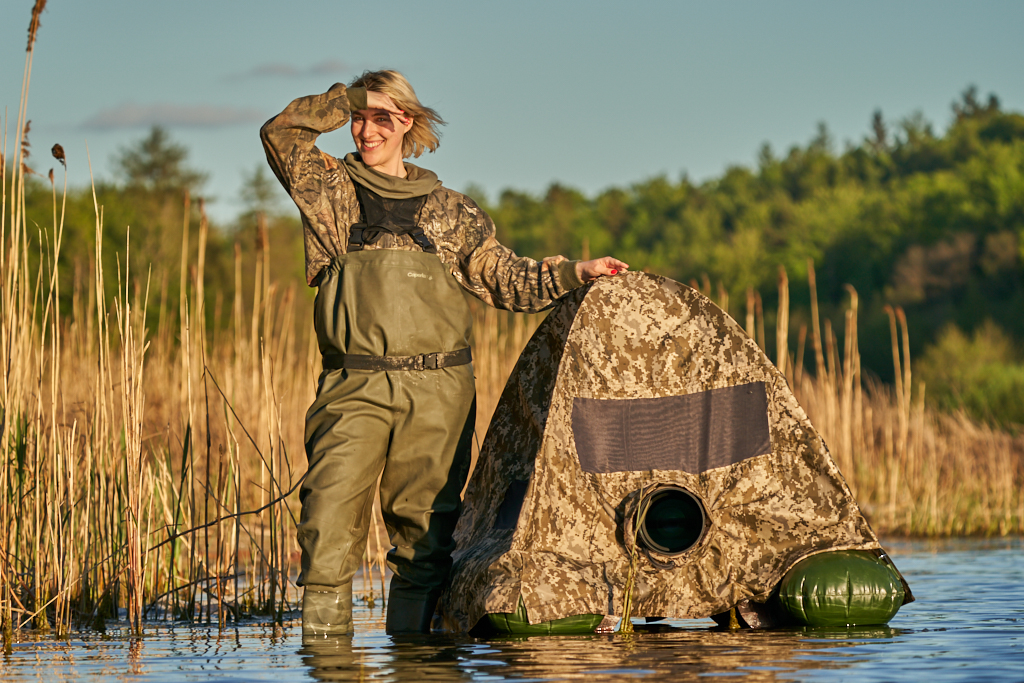
Alright, a floating hide has no drawbacks and it is awesome … not exactly. Depending on the construction you own carrying a blind might be troublesome. On the other hand, any light floating hide is prone to sinking due to punctures. Take that risk into consideration. Staying warm in cold waters while not moving much is another topic. Oh, and keeping your precious camera gear dry too…

There are many aspects to consider. This guide consists of our findings, and hypotheses we decided to verify. If you follow our logic, you might find this advice useful or you might even evade some risks. Either way we hope you find it informative.
Commercially available hides
Michal is an engineer and likes constructing things and to be honest he’s pretty good at it. Doing stuff yourself gives tremendous satisfaction but in the long run it might turn a budget friendly project into a sinkhole. Sometimes buying a floating hide might even be a cheaper solution than making one yourself. Especially if you plan to have more than one takes on it. Ok, our first project was quite successful and budget friendly. On the other hand, it was not final.
Below you will find several floating blinds we have found on the market. If you do not want to spend time tinkering in your shed buying one of these will be your best bet for waterfowl photography. These products are mostly made by photographers for photographers and have been tested in action. If you buy one you also do not risk losing money if you decide to stop your project halfway. Selling a commercial floating hide on second hand market is also way easier than selling one made yourself.
Buteo
The 'Grebe’ hide is made by the company named Buteo Photo Gear®. It is an inflatable type floating hide. You will find a link to their website below.
Grebe floating hide by Buteo Photo Gear®.
We actually own an Aquila Mark II hide made by Buteo and we really find it worth the spend.
Tragopan
Tragopan floating hide is a solid one, made of stiff plastic. It seems to be quite durable. You will find a link to their website just below.
We do not own any equipment made by Tragopan but know several friends who do, and are all fond of their gear.
We also think that this is the very same hide as the 'floating hide’, but I might be wrong. Check their website below.
Jan gear
’Floating hide II combo’ is a hide made by a company called Mr Jan Gear. It is a light and inflatable solution. It actually was an inspiration to our DIY hide current design. It appears to be super portable. You will find a link to their website below.
Huga Nature
We know a floating hide is currently in the making by a company called Huga Nature. It is a polish brand owned and run by Hubert Gajda. You will find a link to his website below.
We own three lens covers and a groundpod manufactured by Huga Nature. All of the items are well made and we think the covers are as good as lens covers get. However, the groundpod is in a league of its own, a brilliant and solid piece of equipment! We fully recommend to go check it out!
Do-It-Yourself floating hides overview
Alright, let’s start with the most interesting part of this article. When I wanted to up my game with photography a floating hide came to my mind. I started the search and found just a few guides. Actually, very few proper texts describing how a float hide is made. Thus, here comes my instruction. If you like to tinker here we go!
There are three major types of DIY float hides:
- Made of PVC pipes
- Made of XPS or extruded polystyrene
- Inflatable floating hide
Crucial aspects I would take into consideration when deciding which DIY floating hide project to do are:
- How am I going to transport my hide? Is it going to be by car, train, boat or plane?
- Once on site how will I carry it around. Will it be on foot, bike or with a small trolley. Or can I leave it on site for a long period of time?
- Where would it be stored?
- How much weight do I want/am able to carry?
- Complexity of the design
- What tools do I own and can use? Both in terms of workshop and software skills (yeah, you sometimes need that too)
- Manufacturing tolerances. Some details have to be made precise while other do not require almost any tolerances at all. The higher the tolerances the sloppier you can be, and the easier the design is. A good design does not force you to be precise. However, sometimes aesthetics suffer.
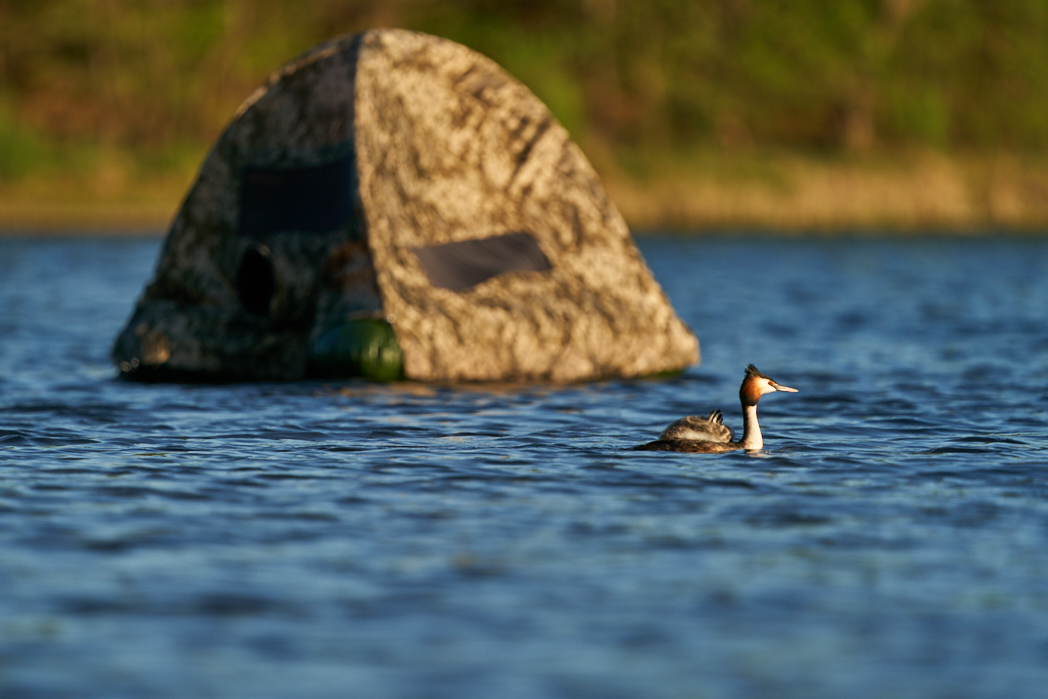
- Size, volume and shooting angle
- What volume do you need? A lower volume hide is easier to move around but it does not eliminate several risk factors such as drowning yourself or wetting the equipment.
- A larger hide might be more comfortable, stable and holds a lot more weight. Heck you could even float on it without touching water – if anchored, but that just makes your project blow out of proportion. I like to keep things simple.
- A larger and floatier hide usually means a higher shooting angle as well, which is something most wildlife photographers try to avoid. So, the decision needs to be wise and well balanced between what you want and can accept.
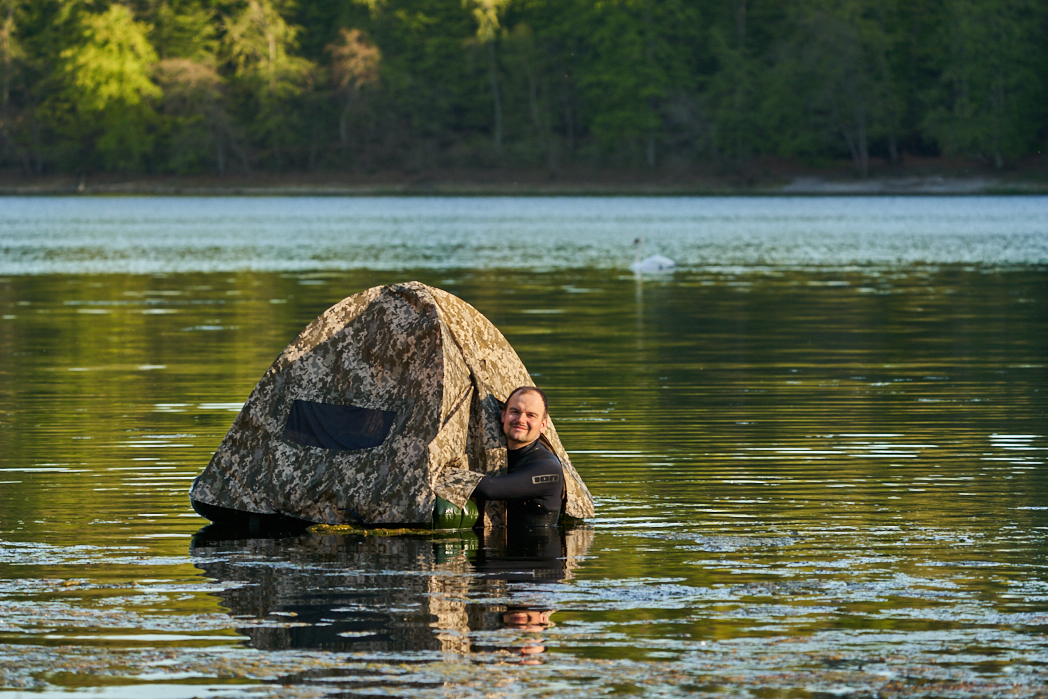
- Camouflage
- Usually, every floating hide consists of a tent mounted atop of floats. You could get a cheap tent from eBay, allegro or other second-hand market and modify it to serve as a photo hide. The only problem are dimensions and having to adjust hide’s platform size to tent’s dimensions or vice versa. I sewed my tents myself. It was not an easy task for me but my tents were precisely adjusted to the floating platform they were mounted on.
- Another approach is to use a camo net. Simple, easy but it might get in your way while shooting. Unless you find a good way of fixing it to the float. I have not tried it but it might fit really well for smaller designs.
- Natural camouflage is usually fastened to tents. I would consider using rubber loops sewn to the tent. I have not added them to my first design but might include them in the future.
Floating hide made of PVC pipes
A floating hide made of PVC pipes has several pros. First of all, you will find necessary components in nearly every hardware store. They are quite cheap as well. In terms of complexity of the design I would consider it pretty simple and straightforward.
Things to consider:
- Volume
- If you want the floating hide to hold you on the water without touching the ground you might need a more complex design. A meter of 150mm diameter pipe has an approximate volume of 17,5 litres. That’s not a lot. You would probably need two 1m long pipe section on each side connected into one piece with bended pipes.
- Portability and reliability
- Floating hides made of PVC pipes are not the most portable ones when it comes to carrying them from car to the spot. If you want a portable PVC floating hide which is easier to transport you have to be able to disassemble it. Unless you have a really large trunk! In theory the gaskets in PVC plumbing holds up to 0,5 Bar which is plenty enough of pressure but it leads us to another topic – reliability.
- If you really want the PVC floating hide to be safe you might want to fill it with something that … floats, yeah. This gets in way with portability. So, it could be a polyurethane foam, empty plastic bottles or other similar stuff. The downside is of course higher weight. If I were to make a PVC hide, I would glue the pipes together and install a valve for water removal. If it would leak at all. Luckily it turns out that water permeability through small crevices is not that great compared to other liquids. Hurray for polarity and hydrogen bonds!
- Fastening the platform
- With a PVC hide it is pretty simple. Be it fastening belts or cable ties. You could even use dedicated pipe wall holders mounted to a flat surface (your platform). The platform itself can be made of anything stiff and flat. I chose a plywood in my other designs. But a light composite would also be great. Thicker platforms make fastening other accessories, such as tent holders, cup holders (hey, a hot mug of coffee is invaluable) and most importantly the camera head – be it gimbal, uniqball, ballhead etc. easier.
I have not decided to make a PVC hide myself. For a few reasons. First of all, I went for XPS hide first due to the reliability and portability issues. An XPS and plywood composite will not take water at all. Furthermore, I did not want to fill my PVC piping with foam due to weight. A plywood and XPS composite can be folded or disassembled for transport easily. However, XPS hide is a more complex design than a PVC one. I would probably go for a PVC one if I had my hide on site all the time and wanted a medium sized hide. When I did a BOM the XPS hide seemed to be a bit cheaper too.
Floating hide made of XPS
This is the design I went for my first floating hide. XPS material has almost no water intake. It is light and quite durable. Of course making a dent in it is quite easy. So some sort of outer lining is a must. I have decided for a 9mm plywood on a top and 6mm on the bottom, which is a bit of an overkill.
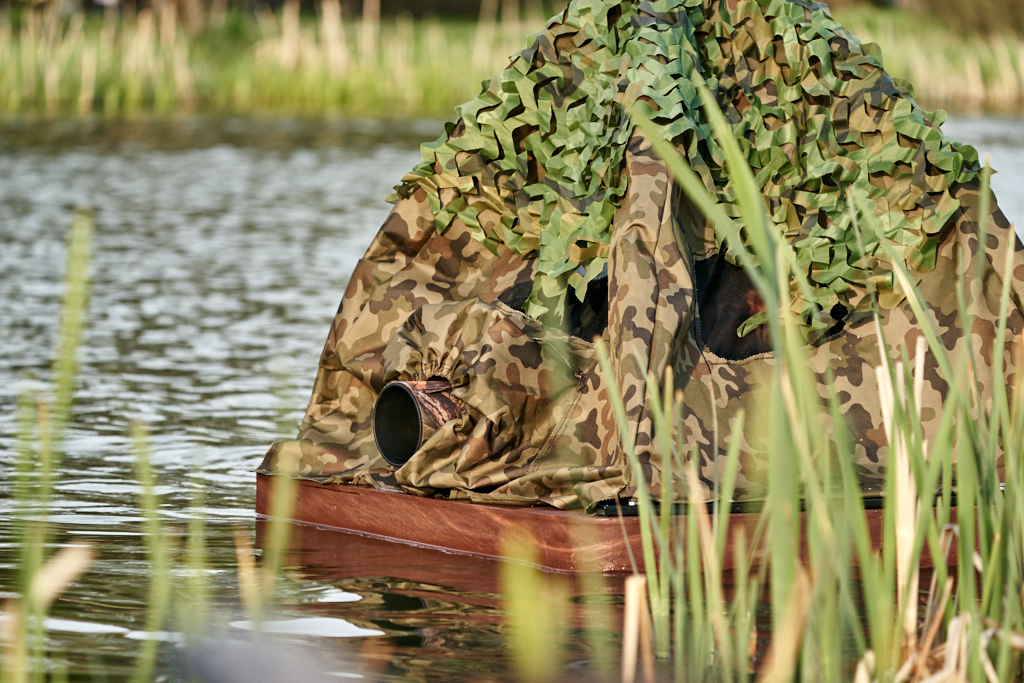
Things to consider:
- Volume and shape
- XPS hides are quite bulky. But they also provide a great volume compared to using PVC pipes and other solutions. They can also be made flat with low shooting angle. Increasing volume comes with either increasing surface and making the hide harder to transport or increasing its height which usually means increasing shooting angle at the same time.
- Shape of course determines the volume. I have thought of several shapes myself. Starting from one found often on the web – a kayak/canoe alike shape with a hole in the centre. It must have a great volume and pretty low shooting angle. But it is hard to get out of in case of an emergency. I decided to make a U like shape, with round corners. It was also quite easy to make due to the fact that I could buy plywood and XPS in similar rectangular shapes, about 120 cm long and 50 cm wide. The whole floating hide can be transported in one piece and it is also foldable taking less space in a car. If you want a smaller hide, just to keep your camera afloat an XPS construction seems like a good choice to me too
- Portability and reliability
- If you make a cladding of your XPS piece it will be quite tough. Furthermore, if there are any dents, who cares! It will still have plenty of volume left. It can’t be punctured and it will not sink. Seems to be the safest hide to me! Just one solid, tough piece of floating construction.
- Transporting such a hide is a different story though. It takes quite a lot of space in any trunk and on site you won’t carry it far away from your parking spot. And that is a huge price you have to pay. For easier carrying the XPS hide can be made out of pieces which can be tied together with something stiff, for instance a metal channel bar. If you go for a butterfly screw you will not have to carry any tool with you! Thus, fitting an XPS hide into a small trunk might be possible if you make your design rightly. A small trolley could be a valuable accessory.
- Fastening the platform
- The platform is a part of the construction so this issue solves pretty much by itself. My hide utilizes t-nuts and a metal perforated plate with a welded 3/8” screw. The plate is screwed to the t-nuts which are installed in the wooden cladding. Simple, elegant and secure.
- T-nuts were also used to secure the tent to the construction. I could think of other options such as painting frame wall holders or metal rings fastened by thin nailed metal straps.
I actually made this type of a floating hide myself. Due to the 'safety first’ approach, it was the first design I went for. The total cost was around 125$ plus my working hours. And I mean lots of working hours.. 10cm thick XPS insulation piece was used. Wood was glued to it at both top and bottom sides. The whole construction consisted of three pieces. The main one to which the gimbal was mounted and two smaller pieces between which the photographer can stand. The whole construction forms a U shape. Two side pieces were fastened to the main piece with hinges. It greatly increased portability and compactness of the hide during traveling. I used two metal perforated C-beams which were secured with bolts to the main piece and each of the smaller side pieces in order to make the construction stiff. It also prevented it from opening and closing on small waves or choppy water. Two garden poles bent to form the C shape were used as a tent frame. The tent itself was then secured to the float with bolts and t-nuts. The platform was painted brown. Be careful with the paint you choose and be sure it is a water-based paint. If the paint contains an organic solvent, it might melt down the XPS, not mentioning environmental aspects. All in all, it was an easy yet sturdy construction.
The tent was made of 360 g/m2 codura material. For sure it was waterproof and tough, but a pain in the butt to sew with a 50-year-old sewing machine. However, with a bit of perseverance it was made. I would not go for such a heavy cloth next time tough! The design was simple too. Velcro secured entrance, rather long sleeve for the lens in the front and three meshed windows.
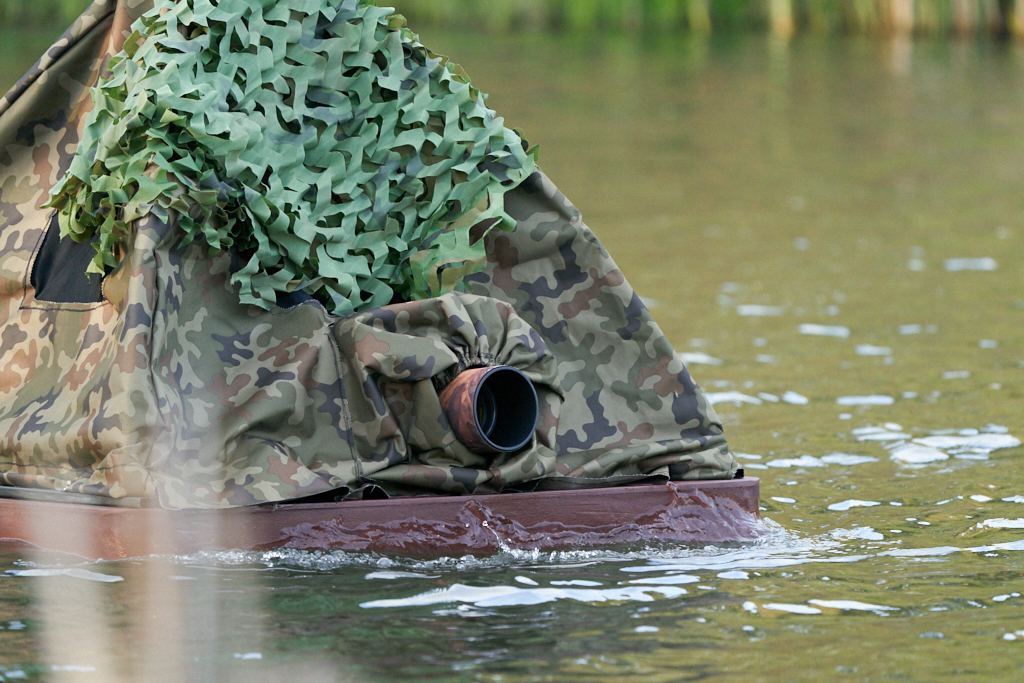
What are the shortcomings I found after a year of usage? Well, its size was definately a limiting factor. It filled my whole trunk! And I travel together with my wife and a kid now. Trunk space became very valuable. Besides that I would think of lowering the weight – I already have a few ideas. Of course wood can be replaced with a stiffer, 100% water resistant material. Anchoring of t-nuts might be done in a more elegant way than using a 9 mm thick plywood sheet as the platform base. Nevertheless, I am quite fond of my first project because of its foolproofness.
Floating hide made of floats/pontoons
Actually, I was quite concerned about this undertaking. I wanted to go all the way DIY, including making the floats myself but I was still unsure how to make it possible. Imagine putting your precious gear on all self-made inflatable floats and then think of a puncture and an air leak when walking, or even worst, while swimming! Ugh, sounds crazy! Despite those doubts, I gave it a go. See my thoughts below.
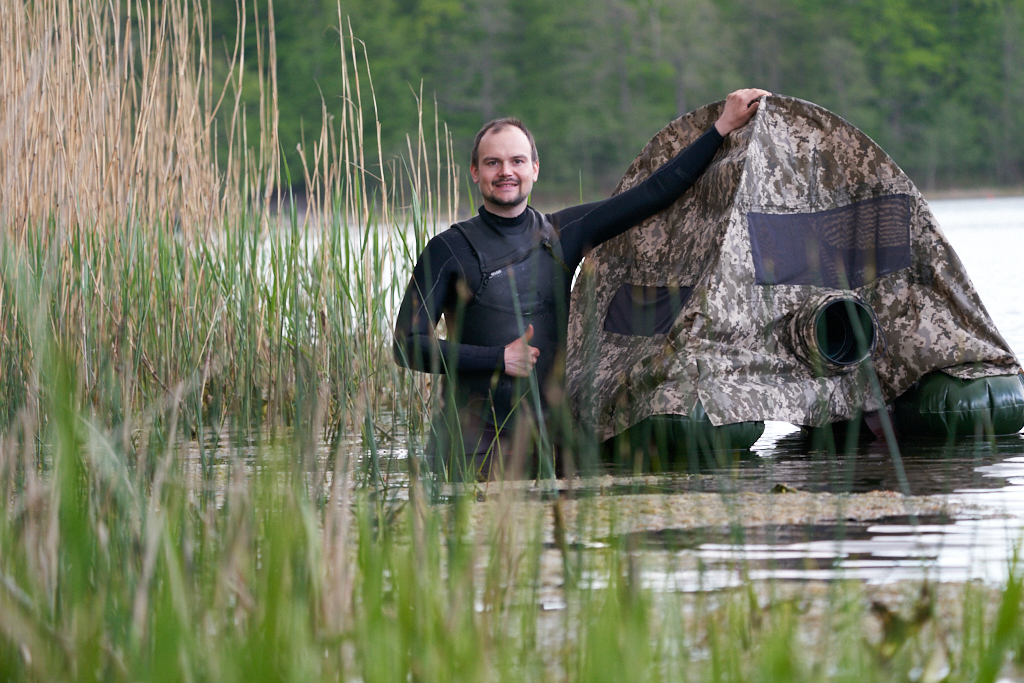
This DIY floating hide project was a complex one but I think it turned out pretty well. So, let’s talk about that.
Things to consider:
- Volume
- I went for two approximately 150 cm long, 30cm wide tubes. Plenty of volume … not true. Actually, the total volume is lower that the volume of floaters. They have to hold a platform which the camera is mounted on. And as the lowest perspective possible is desired the volume which can be submerged before you wet your camera is just a fraction of the floaters volume. The good news is that the design of a platform can be made in such a way that you may alter platform’s height above the water in accordance to water condition.
- Portability and reliability
- That is the cool part. I can carry this hide in one had while holding my camera in the other. It is very light and therefore portable. I have not made a carrying strap or backpack for the hide yet but it is very doable.
- Reliability on the other hand is not so impressive. If you are paranoid about your gear, punctures, air leaks etc. this type of a hide is not for you. Chances of a critical puncture and sinking with your gear are pretty low, but still such a possibility remains. After all the floating hide intended use is to take pictures with your feet on the bottom, not floating freely and in an uncontrolled manner. I would consider other options for use in deep water – an XPS hide or a pontoon or even a kayak ( despite its drawbacks).
- Fastening the platform
- I decided to make a platform similar to the Jan gear one. The platform was made of wood with four aluminium pipes running parallel to the long axis of the hide. The floats were fastened with four belts.
First things first – the floats. I decided to make them of a thick 900 g/m2 reinforced PVC fabric used for crafting boats, pontoons or RIBs. PVC material can be bonded in two ways – you can either weld it or glue it. Welding is of course a better technique. But I lacked the proper professional equipment. Nor I wanted to weld it with hot air gun and try precision of my craftmanship on myself. So, gluing it was. I still needed a hot gun and a roller to glue the whole thing properly and make it 100% airtight. Boston valves were glued into the floaters as well. They are cheap, simple and safe. You can buy them in almost every sailing store. I also made the holders for the tent poles from PVC fabric as well as rings used to securing the tent to the floaters.
The platform was made of wood because I had some plywood left from the XPS hide project. C shaped beds for floaters were cut. And tightened with screws to the main platform. Of course, the t-nuts were leftovers as well. I had to buy the aluminium pipes and their mounts in the hardware store. I went for the 16 mm ones used for storing/pole systems for wardrobes. With a different set of the C shaped beds, it is possible to change the height of the platform in relation to water. A much welcomed feature! If I did not have leftover plywood, I would make a project of all of the parts and order them from a shop with a CNC mill.
This time my tent was made of a lighter canopy. It was about 150 g/m2 instead of very heavy 360g codura I used previously. Tent project was pretty much the same as the one I used for my first hide. Same Velcro entry, same elephant-like sleeve for the lens and same mesh panel layout for navigating around. Poles were scavenged from an old tent.
To sum up – this is the design that using and carrying around is the least hassle. I really like how it turned up. What would I change? Well, not much. Maybe the way of fastening the tent could be smoother with use of a rubber line and rubber eyelets. I would certainly improve the shape of the floater’s flat layouts. Proficiency in Blender would be highly recommended. Yet my layouts were made in the simplest way to be sure the gluing was as straightforward as it was possible. At the cost of wrinkling at the floaters’ end.
Additional equipment
The floating hide is not the last piece of equipment you will need to succeed in water surface photography. Below you can find a list of gear we think might prove to be usefull during your next adventures.
Wetsuit
A proper wetsuit is needed in most climates. I would advise everyone not to use waders. A sudden water uptake can be either scary and sink you or just end your photo session too early. I use an old kitesurfing wetsuit. But any wetsuit fits as long as it provides enough heat insulation. A drysuit is also a viable option, especially if you consider winter or early spring sessions.
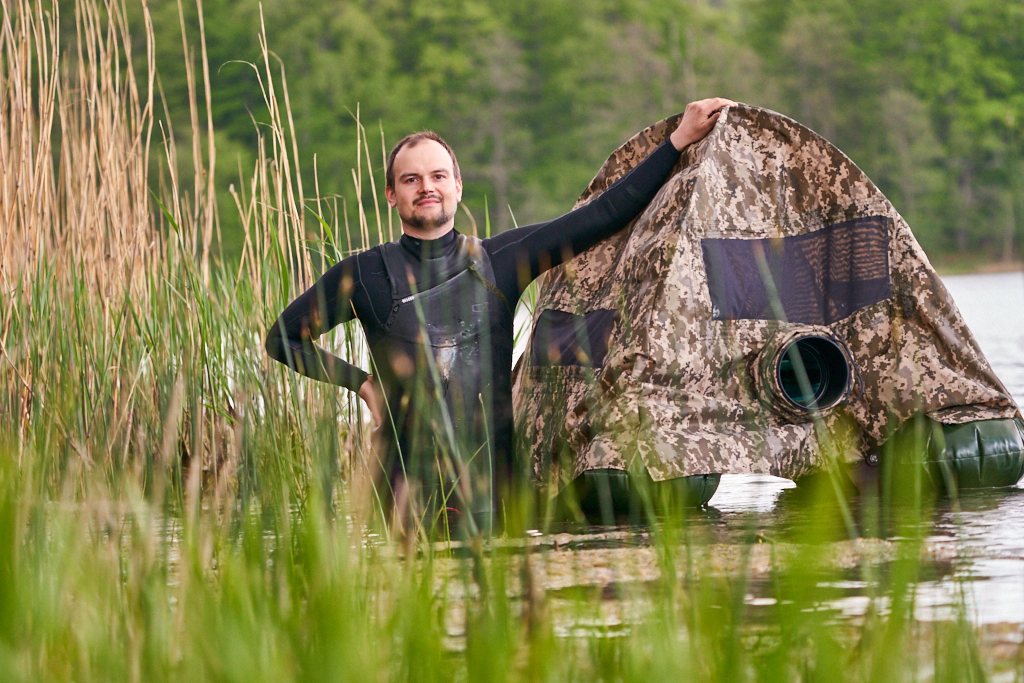
Safety vest
If you are unfamiliar, or uncomfortable with spending time in the water, I would advise to buy a floating vest. A small one might be enough to hold you afloat when you suddenly lose ground. Or it might just give you a much-needed peace of mind.
Watertight pouch
If you travel by car, and most likely you do, a watertight pouch to keep your car keys safe will be handy. A dry bag also might be a good idea if you change your cloths on site rather than in the car. If you make some holders in your hide, it could be taken on water with you. A scene from a comedy movie comes to mind when characters return from skinny dipping and all their clothes are missing.
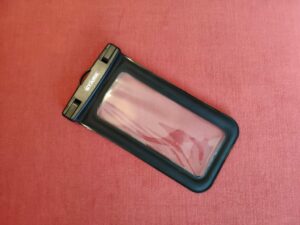
Few shots from a floating hide
Making a floating hide is surely lots of fun. But you do not make one without a reason and after all the goal is to get the shots which would be hard or impossible to take from shore. Here is a short exemplary gallery of what you can expect to get from a floating hide perspective.
Few interesting links to other sources
Hey, my first DIY floating hide did not come from nothing. I had to do some proper research. Actually, I did not know anyone in person who has made one before. So Internet it was. And guess what … unlike cat memes solid info about building hides was not to be easily found. Nevertheless, there are some awesome videos and web pages you might consider to visit too. Here are just few of them. Thanks to all of you who shared your knowledge online.
What you will find below are the three main concepts of a floating hide and few variations of them. All of them work and seem to have been tested in field so have a watch and get inspired!
Video showing a great example of a floating hide made of PVC pipes. The video and hide is made by Ragnis Pärnmets.
Ray Hennessy’s interesting floating hide concept with inverted camera mount and floaters made of paddle boards.
Following example of a floating hide made of PVC pipes, by Brett Mezen.
Another hide made of PVC pipes. Video by Andy Gustavsson.
Floating hide by WPotrebka Photography. Made of PVC pipes as well.
A floating hide made of XPS by Jimmy Breitenstein. Check out his other videos as well. Jimmy knows throughout waterfoul photography and shares a lot of knowledge on his Youtube channel.
Kip Cotter’s take on a concept of inverted camera mount. Coupled with two pieces of solid buoys. A nice and sleek design, be sure to check it out.
The end
You made it to the end of this article. But this is not the end of a story for me. I am still thinking of other designs and improvements to the current ones. Maybe in the future I will decide to make my next, presumable the best floating hide. Until I have a new idea …
Take care and float safely around!
Michal.
